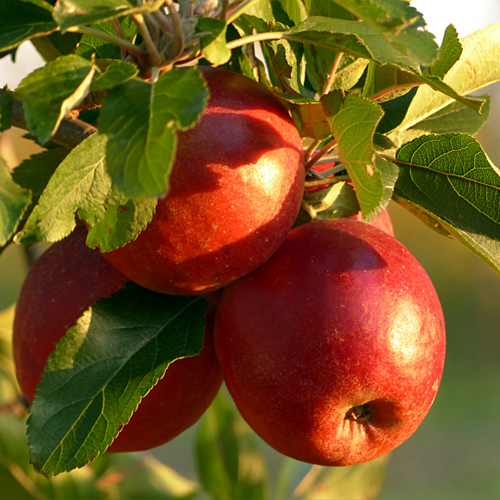It concerns many menstruating people; if it generally occurs 2 to 7 days before the period, it can last up to 14 days and represent great discomfort for people who are prone to it.
It affects more than 90% of people to varying degrees. The main cause: the drop in estrogen just before menstruation. Two consequences of this: a drop in serotonin, a well-being hormone, and a greater impregnation of progesterone, notably causing transit disorders. These symptoms are amplified in the event of an unbalanced diet, stress or deficiency.
But by eating a suitable diet, it is possible to reduce the symptoms... Here are some nutritional tips that can help you:
#1 – Limit salt to combat water retention.
It's the first thing to do ! If you gain weight right before your period and your legs swell, you are probably retaining water. So be careful with your consumption of salty foods (smoked fish, soy sauce, cheese) and ultra-processed foods, which often contain a lot of added salt. In the kitchen, choose herbs and spices to enhance your dishes.
Added sugar should also be limited, because it promotes water storage and retention. For sweet cravings, which are common during the period before your period, choose oleaginous fruits, which naturally suppress hunger, chocolate, preferably dark, skyr with seeds and fruits, or flavored yogurt. Be careful, in the latter case, to choose your products carefully: the best options remain yogurts without added sugar, flavored with pieces of fruit or natural flavors. Be wary of long ingredient lists that often contain additives (e.g. E1422), some are not recommended, others are even dangerous.
#2 – Keep blood sugar stable.
It may seem complicated said like that, but it only takes a little to stabilize your blood sugar levels throughout the day, and thus limit the cravings which occur more often and more intensely before/during your period. If these can be the cause of big headaches, because they are synonymous with weight gain, the nature, quantity and frequency of foods consumed can also lead to bloating and other digestive disorders. So it’s interesting to play on that.
To do this, we eat our 3 daily meals at set times, and we add a snack if it is necessary and reassuring. The snack can be a meal in its own right, its consumption is often wrongly considered as a child or snacking. If the foods it contains are healthy, it can easily be integrated into your daily life.
Regardless of the meal, to stabilize your blood sugar, it is important to pay attention to the glycemic index of foods (by clicking here , you will be directed to a table grouping most common foods). Consuming foods with a low GI is favorable, especially during periods of PMS, but those with a high GI should not be banned. It is simply preferable not to consume them in “isolated intake”, so as not to create a blood sugar peak synonymous with future cravings, but integrated into a predominantly low/medium GI meal, the rise in blood sugar will be less. The inclusion of fiber is also a good factor in reducing blood sugar levels.
#3 – Boost your body with good nutrients.
The drop in serotonin linked to PMS leads to irritability, cravings, low morale, mood disorders, etc.
To allow the body to synthesize this hormone which is so important to our state of mind, and to get through this unpleasant period, we need a good supply of tryptophan. This precursor of happiness hormones is found in large quantities in eggs, tuna, chicken, oats, brown rice, bananas, plums, dairy products, chocolate, etc.
Several studies highlight a link between low calcium levels and worsening symptoms of premenstrual syndrome. Calcium intake is strongly correlated to that of vitamin D, because the latter allows it to be fixed on the bones. Restoring your rates can therefore be advantageous, and it’s simple! Vitamin D is mainly found in fatty fish, egg yolk, while calcium is found in dairy products, legumes, oilseeds, etc.
If you have trouble increasing your calcium intake, DIJO has the solution! Our Lithothamne capsules contain 1200 mg of lithothamne powder, a red algae, a superfood due to its high calcium content. Its action to eliminate excess acidity in the body targets digestive disorders (acidity, aches and burns) and chronic fatigue, common symptoms of PMS, but also other disorders, such as muscle cramps, tendinitis. , sciatica, etc.
Finally, another nutrient of interest for people suffering from PMS is magnesium, whose ratio with calcium is often unbalanced during this period. However, studies show that this imbalance can have an impact on mood changes and irritability. We therefore increase our magnesium intake accordingly, especially as it helps to relieve period pain.
The main sources of magnesium are legumes, seeds, nuts, green leafy vegetables, brewer's yeast and some mineral waters. Refining grains reduces the levels of this nutrient, so opt for whole grains.
The recap!
That's a lot of information? It's normal. When it comes to nutrition, this can be a real headache. The points to remember are:
- Eat 3 (or 4) meals a day, at regular times.
- Reduce your consumption of salt and simple/refined sugar.
- Favor low/medium GI foods.
- Favor certain foods such as fatty fish, eggs, whole grains, legumes, oilseeds, dairy products, bananas and plums. These food categories all have nutrients that are beneficial in reducing symptoms.
- Drink 1.5 L of mineral water per day.
If following these nutritional tips is giving you trouble, you may want to consider supplementing with certain minerals. Our plant-based products all contain high concentrations of micronutrients, you just need to find yours.
Finally, premenstrual syndrome is often taken lightly because “it’s normal” to feel these inconveniences when we enter this period of the cycle. But it is important to listen to your body and the signals it sends us: if you feel that these symptoms are more severe than necessary, do not hesitate to consult health professionals to find a solution to your problem.
Sources:
[1] Dickerson, L.M. (2008). Premenstrual syndrome. American family physician . Accessed October 22, 2021, at https://pubmed.ncbi.nlm.nih.gov/12725453/
[2] Abdi, F., Ozgoli, G. (2019). A systematic review of the role of vitamin D and calcium in premenstrual syndrome . Accessed October 25, 2021, at https://pubmed.ncbi.nlm.nih.gov/30918875/
[3] Fathizadeh, N., Ebrahimi, E., Valiani, M., Tavakoli, N. (2010). Evaluating the effect of magnesium and magnesium plus vitamin B6 supplement on the severity of premenstrual syndrome. Accessed October 25, 2021, at https://pubmed.ncbi.nlm.nih.gov/22069417/
[4] Khazai, N., Judd, SE, Tangpricha, V. (2008). Calcium and vitamin D: skeletal and extraskeletal health . Accessed October 25, 2021, from https://pubmed.ncbi.nlm.nih.gov/18460265/













